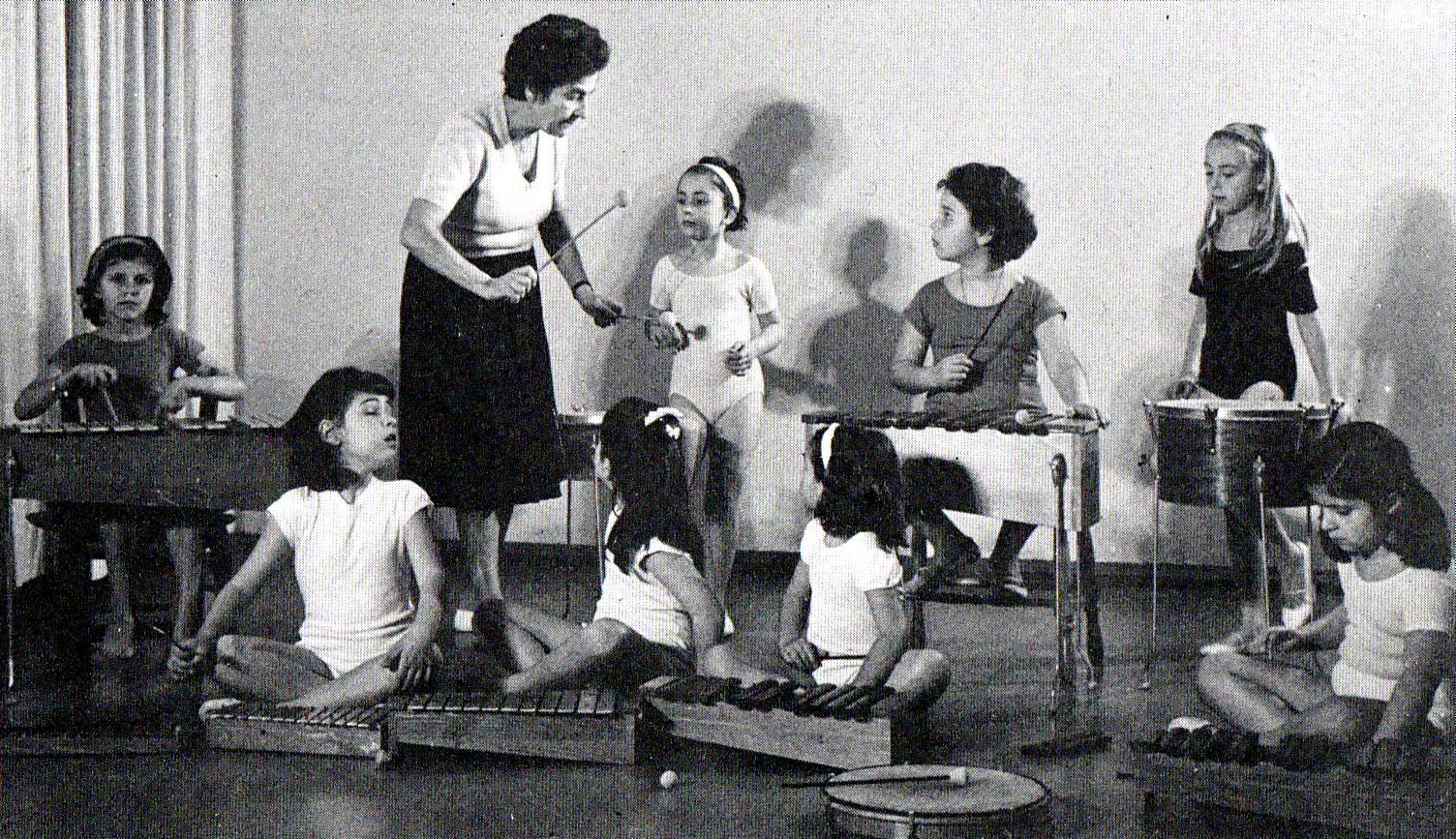ORFF ENSEMBLE

Carl Orff frequently experimented with and took a particular interest in instruments and their possibilities. Under the valuable guidance of Sachs, he came into contact with primitive sound sources, which he used in rhythmic movement and dance exercises. His broadcasts on Bavarian radio (1948) became the catalyst for the formation of the Orff Orchestra (Orff Ensemble), as it is commonly known today.
The Orff Ensemble consists of unpitched percussion instruments, percussion instruments with removable bars, and recorders. Additionally, the human body, vocal sounds, various resonant objects, and improvised percussion are often utilized.
The use of small, easy-to-use percussion instruments, including the barred instruments (xylophone, metallophone, and glockenspiel) in music lessons, unlocked a completely new approach for music pedagogy. These are instruments that, due to their simple sound production, allow participants to experience the creative process of 'elemental music' and to take part in an orchestra.
Wolfgang Harttmann, Looking at the roots, σ. 31
It is a play of their imagination that can be achieved through the buliding-up of the most simple rhythms and melodies, drones and ostinati, with the inclusion of all possible kinds of instrument, and it is the imagination that should be awakened and trained by these means.
(Carl Orff, The Schulwerk, σ. 131)




